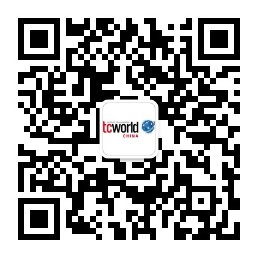This time, we will share cutting-edge practice cases of content management in the new energy industry, focusing on the road to revolutionize the way of content production. Faced with the dual challenges of rapid industry expansion and data deluge, we have led the change and successfully made a magnificent transition from traditional Word editing to DITA standardized content model. This leap not only makes content creation more efficient and high-quality, but also promotes the structuring and unlimited reuse of information. Subsequently, in order to further improve the efficiency and quality of content management, we took a new step forward by exploring the seamless integration of DITA and CMS (Content Management System), and realized the automated management of the whole chain from content creation, publishing to multi-channel dissemination with the help of intelligent process optimization.
In this sharing, we will show how technological innovation can lead the modernization of content management in the new energy industry, inject new momentum into the high-speed flow of information, and enhance the market competitiveness of enterprises. We look forward to working side by side with industry elites to promote a new chapter of content management.
Long awaited, the European Machinery Regulation 2023/1230 was published on 14 June 2023. It shall apply from 20 January 2027 and will govern the manufacture and distribution of machinery within the EU for a long time to come. The Regulation will indeed pose many challenges for technical communicators. For example, there are requirements on the availability of instructions for use and technical documentation and their formats – for the first time, the digital format for instructions for use for machinery has been included in a legal text. In order to bring forward some of the requirements of the Machinery Regulation and make them applicale sooner, the European Commission has revised the so called “Guide to application of the Machinery Directive 2006/42/EC” in April 2024. The bicycle industry in Germany in has launched a project – in which also tekom Germany is involved – to implement the new requirements under the Machinery Directive now. It will support European and international bicycle manufacturers in implementing the essential safety information requirements. The lecture will provide background information, address open issues, and give practical advice.
With the development of digitalization, equipment information is transitioning from traditional paper documents to digital information. However, due to the lack of standardization and interoperability, the preparation, delivery, distribution and use of information in process industry still requires a lot of labor and time costs. In this session, I will explain how manufacturers can prepare and deliver documents more easily, and how users can access and get documents more convenient.
In this presentation, you will learn about the innovative technologies of Digital Data Chain: the use of ID Link and its linked metadata-rich equipment information to form standard document containers, which can then be delivered, shared, and used through a variety of means, including information exchange platforms (IEP), to achieve a higher degree of automation throughout the whole process. These technologies are also an important part of Industry 4.0 and digital twins and the basis for the realization of digital and intelligent plants.
In 2023, the data storage field introduced an intelligent Q&A application called Intelligent Storage Assistant Xiaohai 1.0. Initially, the application faced challenges such as low accuracy in responses, limited coverage of scenarios, and high costs associated with generating language data outputs.
By 2024, the Xiaohai team tackled these issues by developing an automatically updatable data foundation, a new generation Q&A technology framework, and a data flywheel solution. These improvements led to fully automated language data management, 100% coverage of scenarios, and an 85% accuracy rate of knowledge-based answers in user plane storage systems.
What are the key strategies and best practices for managing and writing technical documentation in complex equipment manufacturing?
How does maintenance engineering analysis relate to the technical documentation system? How can we build an effective maintenance engineering analysis ecosystem?
How are configuration or technical status changes (e.g., BOM updates) linked to technical documentation? How do applicability and validity in documentation reflect these changes?
This workshop provides an introduction to writing safety instructions using Simplified Technical English (STE), as outlined in the ASD-STE100 standard. Participants will learn key rules for creating clear, concise, and unambiguous safety instructions. The session covers vocabulary and sentence structure, emphasizing precision and readability. Practical exercises include rewriting existing safety instructions and drafting new ones based on specific scenarios, ensuring that participants gain hands-on experience. By the end of the workshop, they will be equipped to produce effective safety instructions that enhance clarity and comply with STE standards.
The premier gathering event for all decision-makers and specialists in the field of technical communication in China.
WeChat Official Account:
